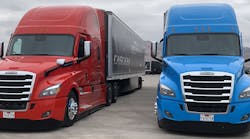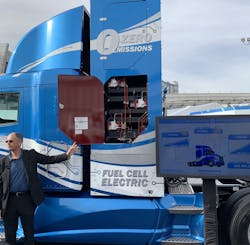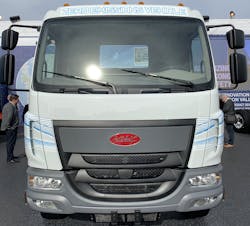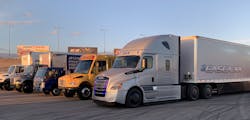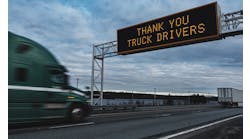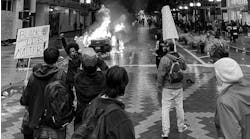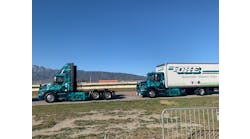At CES, trucking makes noise with automated technology, quiet electric engines
Walking around the Consumer Electronics Show (CES) can be a disorienting experience.
The normal sensory overload that comes with being in Las Vegas is amplified by all the televisions, robotics and other gadgets. It can feel like being in a different world. Even 24 hours after I returned home, I was confusing birds in the sky for drones flying around CES.
An estimated 188,000 people attended the annual event, which Roger Nielsen, president and CEO of Daimler Trucks North America (DTNA), calls "the global stage for innovation." Millions more around the world saw the latest advancements through media coverage, which this year included a healthy dose of trucking.
At the start of the week, DTNA launched its next generation Freightliner Cascadia with semi-automated (Level 2) capabilities. The truck left its mark on far more than just industry enthusiasts, earning the “Best Transportation Technology” award from the editors at Engadget, a leading technology publication.
"Now more than ever, it is imperative that we continue to innovate and push our engineering solutions striving, above all, for safety and helping our customers to run their business efficiently,” Nielsen said in a statement announcing the award.
Powering the Cascadia technology is the upgraded Detroit Assurance 5.0, a suite of camera- and radar-based safety systems assisting the driver by accelerating, decelerating and steering independently.
In an article tweeted by Engadget to its 2.39 million followers announcing the "Best of CES" winners, the writer notes “semi-trucks sort of blend into the background.” But with a vehicle hauling 80,000 pounds "this technology will make our roads safer while simultaneously reducing driver stress.”
Individual company competition aside, the recognition that comes with a transportation technology award at a show like CES should be considered a victory for the entire trucking industry. I have been fortunate to observe the stunning progress on safety and emissions-reduction technologies over the past decade, and see how many people work so hard to make it happen.
Michael McHorse, director of channel marketing for Freightliner and Detroit, was on hand to accept the honor at the "Best of CES" awards ceremony. He was one of dozens of Daimler employees who part took in the multi-day Cascadia launch event for journalists from 25 countries and dozens of other guests.
Many familiar industry faces were on hand at CES from Peterbilt and Kenworth, which were each exhibiting for the second consecutive year.
For 2019, Peterbilt showed a medium-duty electric truck, the latest addition to its growing lineup, while Kenworth joined with Toyota on a zero emission hydrogen fuel cell truck.
Being near an electric truck was probably the quietest place in all of Las Vegas during CES. During the Kenworth-Toyota media briefing, I had not realized the T680 heavy-duty truck was idling during our walk around until it was pointed out to me. The truck will be put into service at the Port of Los Angeles, a place where drayage haulers often have to idle.
I had first encountered that same quiet one day earlier at the Las Vegas Speedway. Before the new Freightliner Cascadia was rolled out, DTNA offered journalists a chance to test drive four electric trucks and one electric school bus.
From the all-electric Jouley school bus from the Thomas Built Buses unit to the heavy-duty eCascadia, QUIET was the first word that came to mind with each ride.
I'm used to being impressed how easy commercial vehicles have becoming to operate. But I was not fully expecting just how minimal the engine noise and vibration could be with an electric motor. As electric commercial vehicles become more common, the low noise is sure to be a plus in attracting drivers.
When it comes to autonomous technologies and electric vehicles, there remains a healthy dose of skepticism. That makes events like CES so important.
Not only does it give the public a chance to become educated and accustomed to these advanced systems, it also helps improve the industry's overall image. It is also a central spot where truck manufacturers could find its next technology partner that will help make the truck of tomorrow better than what is thought possible today.
